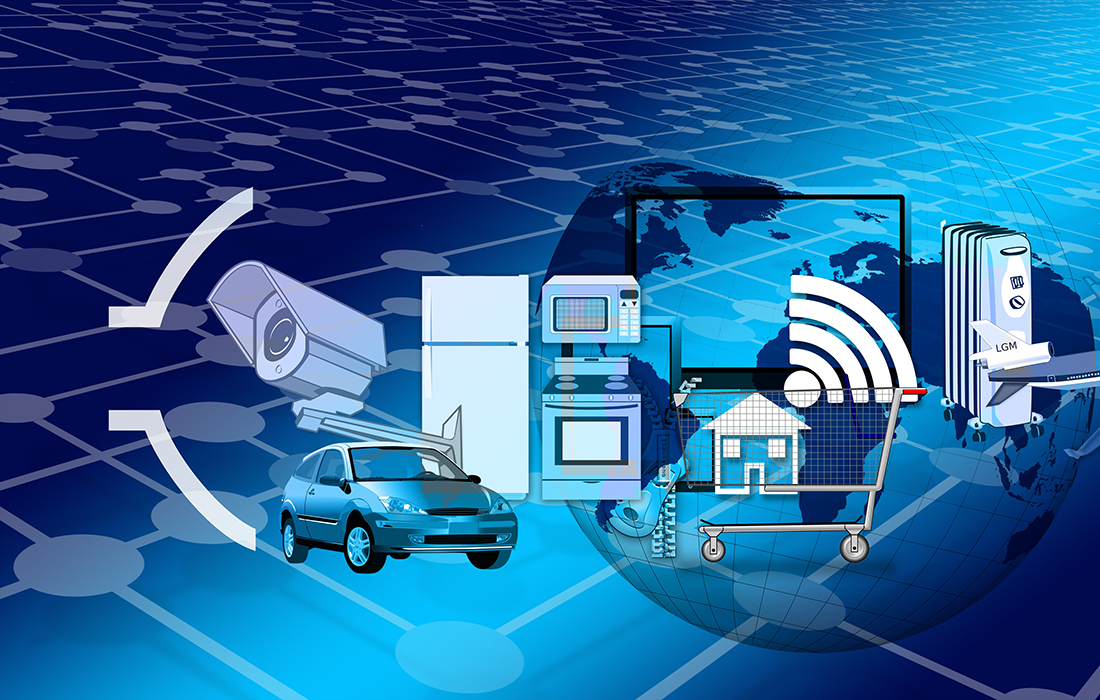Speech assistants such as Siri, Alexa, Google Assistant, and Cortana have gained popularity throughout the last couple of years. Now, artificial intelligence and machine learning are reaching a critical tipping point and internet of things is continuing to expand [1]. Considering these developments, it makes sense that developers are looking for ways to strengthen the “digital mesh” that keeps these technologies together. As new technologies emerge, e.g. drones, robots, and self-driving cars, it is important to look for innovative ways of conversing with these new technologies [1].
For the last couple of years conversational systems have been marked as a trend to watch by industry leaders worldwide. Gartner identified Conversational Systems as one of the top 10 Strategic Technology Trends for 2017 [2]. Gartner ranges conversational systems from bidirectional text or voice conversations, e.g. simple questions about the weather, to more complex interactions such as collecting oral testimony from crime witnesses to generate a sketch of a suspect [3]. This indicates, among other things, that for a lot of people texting and typing no longer cuts it when dealing with technological interaction [1].
Conversational systems are not just about the ability of a computer to understand the human voice. It is also about system-to-system communication. Because of the developments in IoT these system-to-system conversations have become increasingly important. Moreover, these systems won’t be dependent on text and voice alone. To “understand” and process interactions among each other and with humans they use sound, sight and feeling. This continues to blur the line between our reality and the digital sphere [1].
How can enterprises benefit from conversational systems?
For enterprises, it can be valuable to understand how conversational systems can be applied within their business. A lead consultant at TCS Digital Enterprise, Parthasarathi V., stated, “Through conversational software, an enterprise can simplify and reimagine business processes, and reduce and automate workflows through context-aware intelligence systems. It also enables users and systems to have meaningful interactions and work in tandem to meet business goals.” Conversational systems can benefit a business on multiple broad areas, including productivity, scalable customer service, improved customer service, omnichannel customer experience, globalization, and brand personality. For example, customer service can be enhanced by providing customers exactly what they need through advanced AI-driven conversations [2]. By using advanced AI-driven conversations users are being part of a richer conversation instead of being led through a dialog. They will be part of a natural conversations, which does not require to be long, but the system just needs to be aware [4].
Creating customer experience excellence by using conversational systems
With conversational systems, it is possible to save customers time and enhance their overall experiences. Some of the leading technology and service providers (TSPs) are planning strategies which are based on an AI-enabled future. They have acquired AI start-ups which are used to develop new platforms for AI progress. Conversational systems help their customers save time by reducing the amount of decisions and choices they have to make. Through ongoing development of these systems, TSPs and other companies can not only meet, but also exceed their customers’ expectations, resulting in a competitive edge. The companies can create powerful tools, such as well-designed chatbots, to accelerate and personalize customer services, aid interactions, and enhance the overall customer experience. These tools should be used to establish tailored product and service settings and preferences, resulting in users having less to consider, choose and configure [5]. Gartner predicts that, in 2018, half a billion users will save two hours a day as a result of conversational systems based on AI.
Better communication of virtual assistants
The development of AI-powered virtual assistants is becoming a near-reality. Which makes clear that accurate communication needs to be part of an effective owner/assistant relationship. However, this cannot happen without developing strong conversational systems [3]. China’s biggest search engine, Baidu, has made great advances in the accuracy of conversational systems. With their Deep Speech 2 technology they can sometimes transcribe Mandarin more accurately than humans. The technology can even become easily universally available because it is able to learn English as easy as it does Mandarin [6].
Future developments of conversational systems
Conversational systems still have a long way to go. There have been great breakthroughs in understanding more complex sentences and requests, but they still require a lot of improvement. At the moment Microsoft is working on a natural user interface (NUI) that can combine gestures, touch and gazes with natural language, to help deepen conversational systems [3]. The development of conversational systems is paving the way for a new wave of innovative businesses. It enables businesses to create strategic relationships to obtain competitive advantages [7].
The developments also create the possibility of a voice controlled world. Voice controlled conversational systems could soon offer the same level of functionality and benefits as current technologies such as regular chatbots, without the need to bury our faces in various displays. Instead of becoming increasingly glued to our screens this offers the possibility of hands-free computing. The biggest technology companies of today are already laying the building blocks towards this future [8].
There are many possible functionalities that the further development of conversational systems could provide. Some applications may be hard for us to imagine now but will be the reality of the future. Andrew Ng, the former VP & Chief Scientist of Baidu and associate professor at Stanford University, has said, “I hope to someday have grandchildren who are mystified at how, back in 2016, if you were to say ‘Hi’ to your microwave oven, it would rudely sit there and ignore you.”
[1] Newman, D. (2017, June 19). Conversational Systems are the Future of Business. Retreived from Huffingtonpost: http://www.huffingtonpost.com/entry/conversational-systems-are-the-future-of-[2] Panetta, K. (2016, October 18). Gartner’s Top 10 Strategic Technology Trends for 2017. Retreived from Gartner: http://www.gartner.com/smarterwithgartner/gartners-top-10-technology-trends-2017/
[3] Tamturk, V. (2017, May 1). Are Conversational Systems the Future of Web Interface? Retreived from CMS Connected: http://www.cms-connected.com/News-Archive/April-2017/Conversational-Systems-Chatbots-Voice-Activated-Assistants-Future-of-Web-User-Interface
business_us_5947f55de4b04d8767077a5f
[4] Coin, E. (2016, August 1). Conversational Systems, Today and Tomorrow. Retreived from Big Data Zone: https://dzone.com/articles/conversational-systems-today-and-tomorrow
[5] Forni, A. (2017, May 8). AI Gives Customers a Valuable Resource: Time. Retreived from Gartner: http://www.gartner.com/smarterwithgartner/ai-gives-customers-a-valuable-resource-time/
[6] Milazzo, J. (2016, October 18). How Baidu’s Deep Speech 2 is winning the speech recognition game. Retreived from TutorMing Chinese for Business Blog: http://blog.tutorming.com/business/baidu-deep-speech-2-recognition-voice-command-china
[7] Hood, C. (sd). How Siri, Alexa, and Conversational Systems are Changing Business. Retreived from Code My Views: https://codemyviews.com/blog/siri-alexa-conversational-systems-changing-business
[8] Bajarin, T. (2017, June 17). How the Amazon Echo Could Fundamentally Alter Tech’s Future. Retreived from TIME: http://time.com/4636194/amazon-echo-voice-control/




